 Philippe Croizon in 2015 | |
| Personal information | |
|---|---|
| Born | 1968 (age 55–56) |
| Sport | |
| Sport | Swimming |
Philippe Croizon (born 1968) is a French athlete and the first quadruple amputee to swim across the English Channel and to run the Rally Dakar. [1]
 Philippe Croizon in 2015 | |
| Personal information | |
|---|---|
| Born | 1968 (age 55–56) |
| Sport | |
| Sport | Swimming |
Philippe Croizon (born 1968) is a French athlete and the first quadruple amputee to swim across the English Channel and to run the Rally Dakar. [1]
His amputations were required due to a severe electric shock accident which occurred in March 1994. [2] At the time, Croizon was employed as a steelworker at the foundry of Poitou, [3] 26 years old and married, with one son; his wife was expecting a second child. [3] At his home in Saint-Rémy-sur-Creuse, Vienne, while standing on a metal ladder on the roof to work on a television antenna, Croizon received a severe electric shock from a high-voltage power line which earthed (grounded) through the ladder, [2] [3] to which he became adhered. Twenty minutes passed before a neighbour could raise the alarm. He was hospitalized in Tours, where doctors removed his left arm above the elbow, his right arm below the elbow, then his right leg above the knee. Surgeons had thought that the left leg could be saved, but when that also required removal, Croizon reported feeling "despair". [3]
During his recuperation in the hospital, he saw a television programme about a female channel-swimmer, who Croizon said inspired him. [2] [4] He began a regimen of swimming, training for over five hours per day with the Maritime Gendarmerie, the French marine police, in the sea near La Rochelle. [3] He experimented with different prosthetic limbs designed for swimming, with fins attached to the stumps of his legs. [3] One set of specially designed prosthetics cost €12,000, and are made from carbon and titanium. [4] [5]
He wrote a book entitled J'ai décidé de vivre (I Decided to Live), using a speech-to-text computer system. [2] He also made a parachute jump. [2]
Croizon's preparations for the channel-swim attempt took 35 hours per week for two years; throughout the training period, he received letters of support from national politicians, including then-President of France Nicolas Sarkozy. [6] It was during this period that he completed a swim from Noirmoutier to Pornic in less than five hours. [6]
On Saturday, 18 September 2010, at the age of 42, he swam across the English Channel in less than 14 hours. [7] He set off from Folkestone at 06:45, arriving at Cap Gris Nez at 20:13, a distance of 21 miles (34 km). [8] [9]
After the crossing, he reported that he had felt pain, but was confident that he would finish. [1]
In April 2012, Croizon announced a new project, to swim four straits separating five continents, in which he would be accompanied by long-distance swimmer Arnaud Chassery. [10] [11] The planned trips included Oceania to Asia, across the Red Sea (linking Asia and Africa), the Straits of Gibraltar (linking Africa and Europe), and the Bering Strait (linking Asia and America). [10]
Croizon completed the first swim, linking Oceania and Asia, in May 2012, when he swam 20 km (12 miles) from Papua New Guinea to Indonesia in seven-and-a-half hours, accompanied by Chassery and a local Papua New Guinean man, Zet Tampa, who swam with them in support. Their course was along New Guinea Island, shared by both countries. [12] [13]
In June, he crossed the Red Sea from Egypt to Jordan, over a distance of 19 km (12 miles) in about 5 hours. [14]
Croizon completed his Straits of Gibraltar crossing in July, from Tarifa, Spain, over 14 km (9 mi), to land near the city of Tangier, Morocco. He completed the journey with a friend in "just over five hours." [15]
His planned August Bering Strait swim from Little Diomede Island, across the international date line, to Russian Big Diomede, was to occur a week after the 25th anniversary of Lynne Cox's historic crossing on 7 August 1987. Croizon's training regimens included temperature conditioning for the below 40-degree (F) water by swimming in ice-melt mountain lake water, and ice water baths. [16] The August 13 dawn attempt was delayed, then canceled, due a storm arriving early. [17] When a lull in the bad weather arrived on 17 August, the team's start was delayed by high waves until the late afternoon (3 pm local time). [18] Croizon and Arnaud completed the 4.3 km (2.7 miles) swim across the Bering Strait in one hour and 20 minutes. [18] [19] Dense fog and strong currents added time and distance to the trip in 4 degree C (39 F) water. After crossing the International Date Line, they continued for a few hundred yards to Great Diomede island in Russian waters without official permission. [20]
Croizon has a customised electric wheelchair that cost €24,000 to build. In August 2013 it was stolen, but recovered a few days later after much publicity in the media and on Twitter. [21] [22]
He participated in the 2017 Dakar Rally with a modified buggy, finishing in 48th place out of 317 starters.
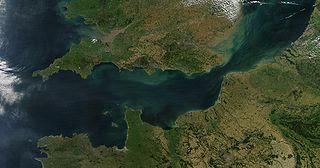
The English Channel, also known as the Channel, is an arm of the Atlantic Ocean that separates Southern England from northern France. It links to the southern part of the North Sea by the Strait of Dover at its northeastern end. It is the busiest shipping area in the world.
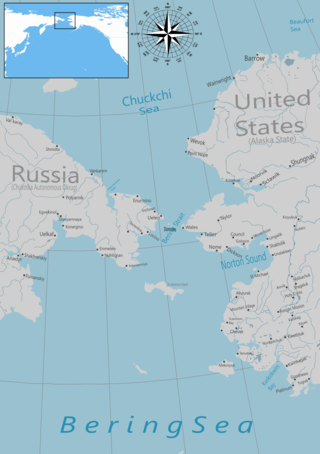
The Bering Strait is a strait between the Pacific and Arctic oceans, separating the Chukchi Peninsula of the Russian Far East from the Seward Peninsula of Alaska. The present Russia-United States maritime boundary is at 168° 58' 37" W longitude, slightly south of the Arctic Circle at about 65° 40' N latitude. The Strait is named after Vitus Bering, a Danish-born Russian explorer.

Cook Strait is a strait that separates the North and South Islands of New Zealand. The strait connects the Tasman Sea on the northwest with the South Pacific Ocean on the southeast. It is 22 kilometres (14 mi) wide at its narrowest point, and is considered one of the most dangerous and unpredictable waters in the world. Regular ferry services run across the strait between Picton in the Marlborough Sounds and Wellington.
Marilyn Grace Bell Di Lascio is a Canadian retired long distance swimmer. She was the first person to swim across Lake Ontario and later swam the English Channel and Strait of Juan de Fuca.

The Strait of Dover or Dover Strait, historically known as the Dover Narrows, is the strait at the narrowest part of the English Channel, marking the boundary between the Channel and the North Sea, and separating Great Britain from continental Europe. The shortest distance across the strait, at approximately 20 miles, is from the South Foreland, northeast of Dover in the English county of Kent, to Cap Gris Nez, a cape near to Calais in the French département of Pas-de-Calais. Between these points lies the most popular route for cross-channel swimmers. The entire strait is within the territorial waters of France and the United Kingdom, but a right of transit passage under the United Nations Convention on the Law of the Sea allows vessels of other nations to move freely through the strait.

The Northumberland Strait is a strait in the southern part of the Gulf of Saint Lawrence in eastern Canada. The strait is formed by Prince Edward Island and the gulf's eastern, southern, and western shores.
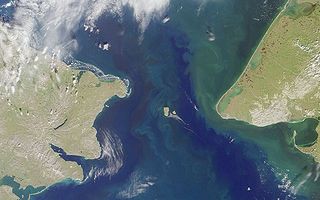
The Diomede Islands, also known in Russia as Gvozdev Islands, consist of two rocky, mesa-like islands:

Little Diomede Island or Yesterday Island is an inhabited island of Alaska. It is the smaller of the two Diomede Islands located in the Bering Strait between the Alaskan mainland and Siberia. The island has one town, also called Diomede.
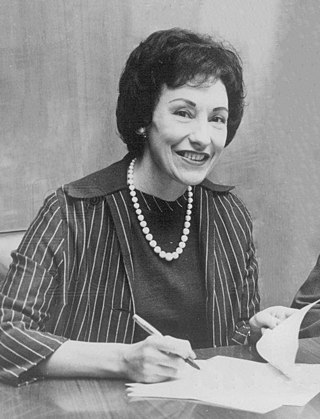
Florence May Chadwick was an American swimmer known for long-distance open water swimming. She was the first woman to swim across the English Channel in both directions, setting a time record each time. She was also the first woman to swim the Catalina Channel, the Straits of Gibraltar, the Bosporus, and the Dardanelles.

Lynne Cox is an American long-distance open water swimmer, writer, and speaker. She is best known for being the first person to swim between the United States and the Soviet Union, in the Bering Strait, a feat which has been recognized for easing the Cold War tensions between U.S. President Ronald Reagan and Soviet leader Mikhail Gorbachev.
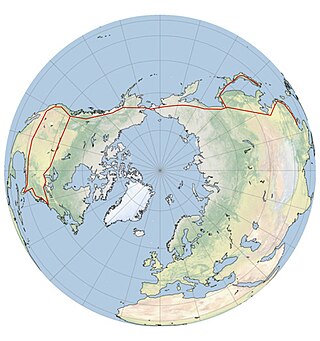
A Bering Strait crossing is a hypothetical bridge or tunnel that would span the relatively narrow and shallow Bering Strait between the Chukotka Peninsula in Russia and the Seward Peninsula in the U.S. state of Alaska. The crossing would provide a connection linking the Americas and Afro-Eurasia.
Dr. Vicki Keith Munro, CM, O.Ont, LLD, ChPC is a Canadian retired marathon swimmer, coach and advocate for disabled athletes. Her accomplishments include the first crossing of all five Great Lakes, a 100-hour swim and the world record distance of 80.2 kilometers swum using the butterfly stroke. Many people consider Keith as the face of marathon swimming.
Hem Thon Ponleu is a Cambodian freestyle swimmer. He competed at the 2008 Summer Olympics and 2012 Summer Olympics. His niece Hem Thon Vitiny also swam in both Olympics.
Turkey national amputee football team is the men's national team of Turkey in amputee football. It is governed by the Turkish Disabled Sports Federation, and takes part in international amputee football competitions.
Nejib Belhedi is a Tunisian Marathon Icy and Iron open-water swimmer.

The 2017 European Amputee Football Championship was the first edition of the annual international competition of amputee football national men's teams. It was organized by the European Amputee Football Federation (EAFF), and was held in Istanbul, Turkey between October 1–10, 2017. The championship's drawing ceremony took place in Riva, Beykoz, Istanbul on August 19 to determine the groups.
Jacques Amyot was a Canadian swimmer from Quebec. As a long distance swimmer, besides holding 50 records in Quebec and 15 in open water swimming in Canada, qualifying for the 1948 London Olympics, and crossing the English channel twice, he may be best known for winning the first 26 km Marathon race across Lac St. Jean on July 23, 1955 in eleven hours and 32 minutes. The race has continued and is now known as la Traversée internationale du lac St-Jean. As an honored guest, Amyot frequently attended the race and congratulated the winner until his death in 2018.
Guillermo Osvaldo Marro is an Argentine Paralympic swimmer who competes in international elite events. He specialises in backstroke swimming. He is a triple Paralympic medalist, double World medalist and a triple Parapan American Games champion. He is highly regarded as Argentina's most successful Paralympic swimmer.
Hassan Baraka is a Moroccan open water swimmer.